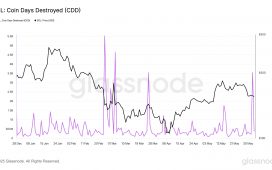“It will be welcome news to many that we have been able to cut interest rates again,” said Andrew Bailey, the Bank of England governor, last week. Plenty of mortgage holders would agree. Savers might not share Mr Bailey’s sentiments. However, he justified the cut, made despite inflationary risks, by arguing that falling worker bargaining power would see price pressures subside. Without rate cuts, the Bank warned, there was the risk of anaemic economic growth.
The chancellor, Rachel Reeves, backed the Bank, saying its action would “ease cost of living pressures”. That is true, but the benefits of lowering the burden of borrowing won’t outweigh the costs of Ms Reeves’ fiscal choices. She is counting on up to six base rate cuts by mid-2026 to buoy consumer sentiment. But relying solely on monetary policy is not effective economic management.
The former Tory prime minister Edward Heath once mocked the then-chancellor Nigel Lawson for being a “one-club golfer” stuck in a bunker. “He doesn’t know what to do and has therefore very wisely decided to do nothing,” Mr Heath quipped. Many holes have been played on the parliamentary green since, but the critique still holds.
Ms Reeves is betting that steeply declining borrowing costs will have an immediate impact on businesses and households in a way that capital investment – the core of the chancellor’s “plan for growth” – never could. Low interest rates alone won’t end stagnation. Between the financial crisis and the pandemic, the UK kept interest rates at historic lows. Yet economic growth and productivity remained lower than in the preceding decade – though Brexit didn’t help. Cheaper borrowing failed to spark robust investment and high levels of consumer confidence.
The reason is that businesses and households often use lower rates to pay off debt rather than taking on new loans. This is especially true in a sluggish economy – people prefer saving over spending. As John Maynard Keynes argued, in uncertain times, firms and individuals hoard cash, undermining the intended effects of monetary easing. Even if firms face lower borrowing costs, they won’t invest unless they see demand rising. The problem isn’t access to cheap credit – it’s weak demand.
Stagnant growth this year stems from insufficient fiscal stimulus. Much of the government’s borrowing is likely just offsetting capital outflows due to the trade deficit, rather than adding to private sector spending power. To boost growth, a larger fiscal deficit is needed. That could come through higher public spending. Or it might be through fiscal reliefs for, say, green investment. It could also be achieved by tax cuts targeted at lower-income households, who are far more likely to spend than save.
Yet the Treasury wants public sector net borrowing to decline from 2025-26, to return “inflation sustainably to target”. This is not, as the Bank says, a concern. Constraining government spending will cut growth – growth that ministers say is their top priority. Ms Reeves’s real test comes in 2026-27 when spending cuts and tax hikes kick in to meet self-imposed fiscal rules. Labour MPs, councillors and activists must lobby her to rethink. Rather than prioritising deficit reduction, Ms Reeves should boost spending on public services and job creation – ensuring fiscal policy aids, not hinders, economic wellbeing. The last decade showed clearly that low rates alone won’t deliver growth. Without an active fiscal policy, Britain risks remaining trapped in Mr Heath’s proverbial bunker.










